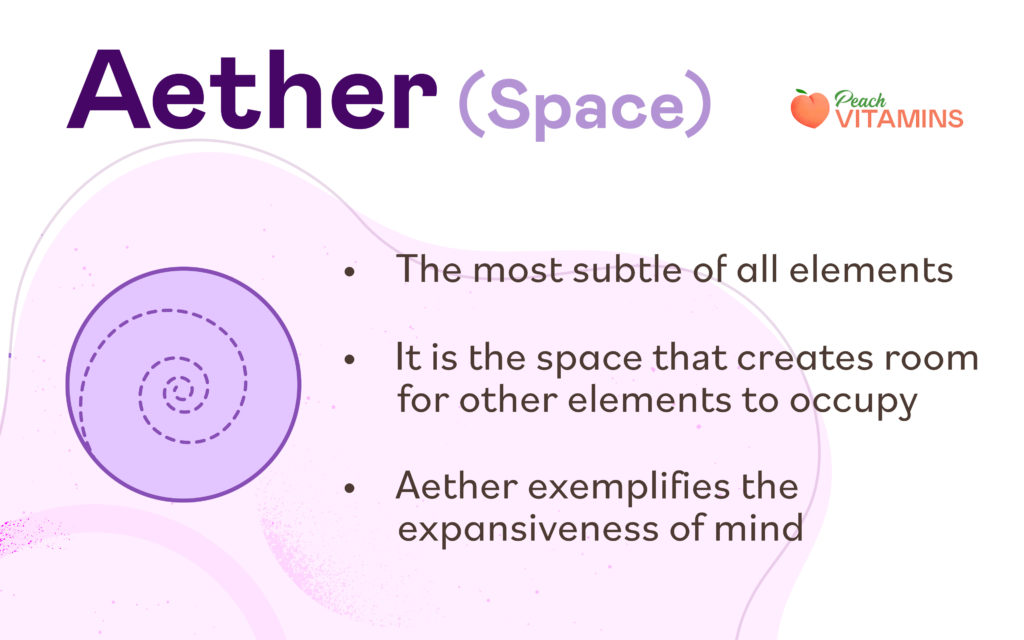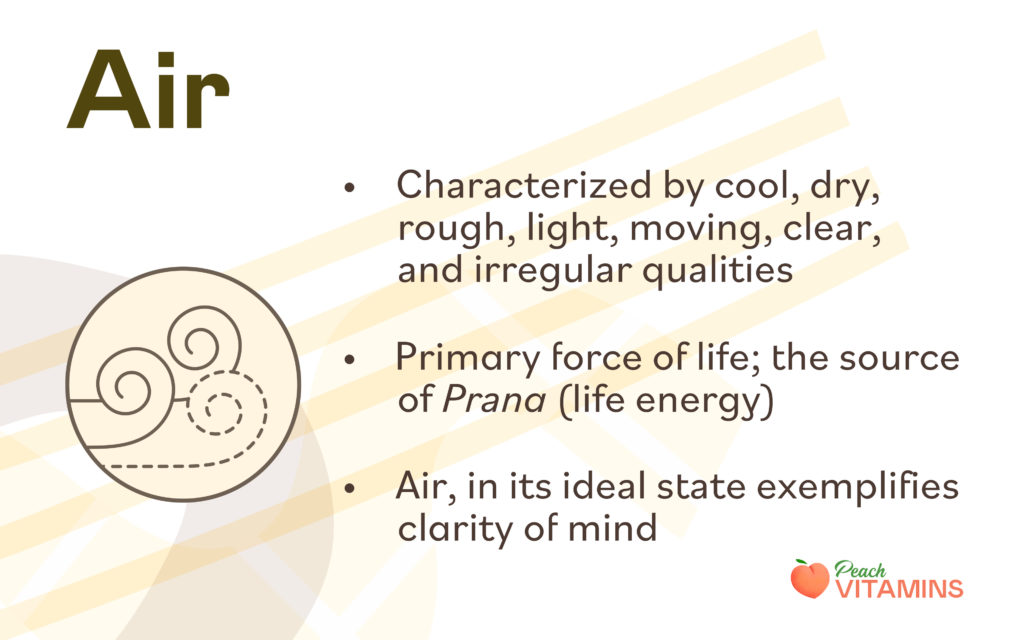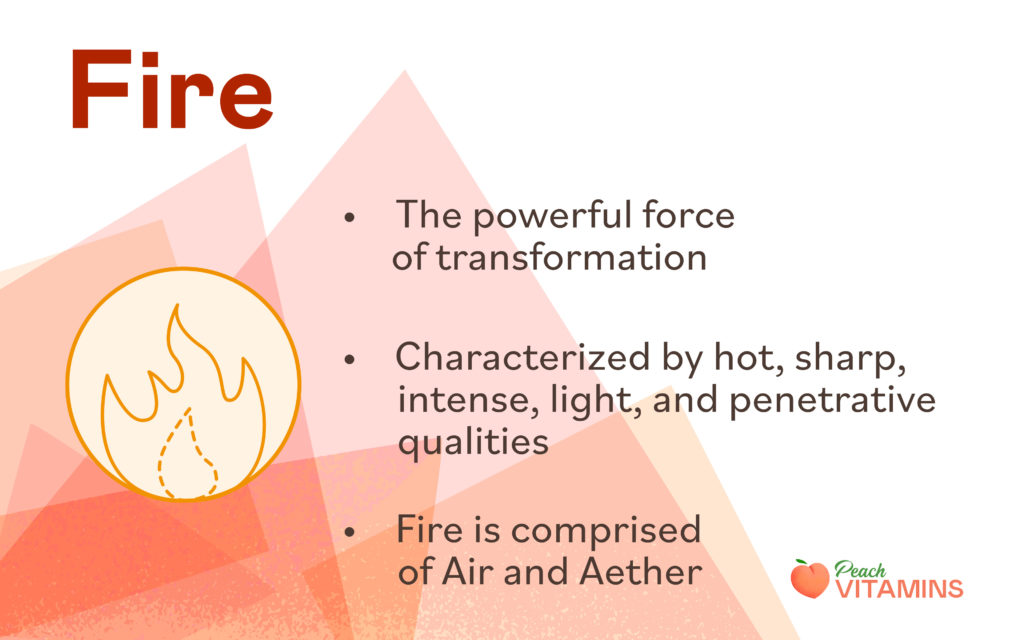With a history of about 5,000 years of uninterrupted practice, Ayurveda is probably the longest, unbroken healing tradition from the ancient world. It has not only survived for centuries, but has grown over time and is continuously evolving. Ayurveda translates from Sanskrit as “the knowledge of life” or “the science of life.” Though now a part of the Whole Medicine System (WMS), Ayurveda is not just a system of medicine but also a way of life.
The elements of Ayurveda owe its timeless character to its core principle that emphasizes prevention and health promotion rather than remedial action. The focus of Ayurveda is not to cure a disease, but to achieve an optimal state of health, enabling an individual to feel their best. It seeks to promote longevity, vitality, immunity through proper diet, yoga, meditation, holistic stress management, use of herbs, and conscious living practices.
The theory of Panchamahabhuta (five elements) is the cornerstone thought of Ayurvedic philosophy. Let’s have a thorough discussion of these elements–their unique features, their manifestations in human life, and how they relate to our mind and body.

Panchamahabhuta–Five Elements of Nature
Five fundamental elements of nature combine to form matter. These elements – ether, air, fire, water, and earth are present in everything and everyone in varying proportions. Every material existence, living or non-living, comprises a unique combination of these elements. In living beings, these elements merge to form three bodily energies (doshas) to govern all the physiological functions necessary to sustain life. We consider these five elements the building blocks of tissues and organs. All the elements must come together to create life. Life can not exist in the universe if even the element goes missing.
In Ayurveda, the study of human anatomy starts with a thorough understanding of five elements. Every element has a unique set of characteristics, which manifests itself by certain qualities that are reflected in the body-mind makeup of the individual. These qualities can be recognized by simply paying close attention to the body, emotions, and sensations.

Aether (Space)
Aether or Space is the most subtle of all elements. Its essence is that of emptiness, the absence of other elements. It is the space that creates room for other elements to fill. It’s an omnipresent element characterized by its vast, expansive nature. Space respects no boundaries and is inherently limitless. In Sanskrit, the ether element is called Gagan (sky), signifying its endless character.
In the human body, they manifest this boundless character of ether in the expansiveness of mind. Our imaginations it cannot contain thoughts in any boundary because the inherent quality of ether powers them. We observe the physical presence of space at the center of bones, intestines, blood vessels, in the ear, and lungs.
When space is not filled by other elements, it can be destructive as well. Too much space can deform structures and cause the death of cells. Emptiness, if not filled by love and nourishing pursuits, can disturb the peace of mind. Similarly, food (other elements) is needed to fill up the empty intestines; otherwise, the body cannot function. Lungs have no life unless filled with air.

Air
Air is the second element of nature that represents movement. All kinds of movement in the body – blood circulation, breathing, movement of food in intestines, transfer of nutrients, waste elimination, working of the nervous system are all manifestations of air. Without the air element, the brain cannot communicate with other parts of the body. We will not breathe, and thoughts will not flow. It is the element responsible for original thinking, creativity, and clarity of senses.
Air is the primary force of life, the giver of Prana (life energy). To maximize Prana, we must learn to control the movement of air – therefore Ayurveda, as well as its sister science yoga, puts so much emphasis on the importance of regulated breathing.
We characterize air by cool, dry, rough, light, moving, clear, irregular qualities. It manifests itself by these very qualities in the mind and body of an individual. When the skin is dry, cold, rough, it’s the work of air. This element provides uncertain and irregular character to the mind. Periods of indiscipline, instability, changing mood, and difficulty in deciding are all expressions of the air element. It is also responsible for clear thinking.
Air may move too fast or too slow; either way, it’s not desirable. Too little movement may cause poor circulation, sluggish thought, while too much movement can mean a restless, hyperactive mind.

Fire
Fire is the third element of nature that represents the powerful force of transformation. All kinds of biochemical changes in the body express the fire element. Breakdown of food, actions of digestive enzymes, conversion of food into energy, assimilation of nutrients into tissues, and hormonal actions are all physical manifestations of fire. Without fire, there will be no hormones to rule emotions, and the food we eat will not get converted into energy.
The emotional manifestation of fire is as processing raw information. Receiving information, ideas, emotions, feelings, experiences through perceptual or visual means and processing, understanding, digesting, and finally assimilating them into the mind are some functions that are impossible without fire. It is the primary metabolic force required for digesting foods and ideas, also called the digestive flame (Agni). Fire connects us to the outside world, providing the mind and the body with their fuel and energy.
Fire provides intelligence, focus, understanding, intense emotions, and sharpness of vision and intellect. We characterize it with sharp, light, penetrative qualities. Fire contains both the elements of air and ether within it. We need air to ignite the flame, and ether provides it the space to exist. We observe the physical presence of fire in the stomach acids, bile juices, red blood cells, and hormones. However, fire is a destructive force, which is why it is always accompanied by the water element in the body, to keep it from burning everything.

Water
Water is the soothing force of life, the one that nourishes and sustains. We characterize it by moist, flowing, cool, heavy, smooth qualities. Without water, the fire will burn everything, and the earth cannot hold together or to provide the body its structure. It provides a medium for the cohesion of other elements to keep them together.
The human body comprises about 72% water. Water is present everywhere – in the mucous membranes, lymphatic fluids, saliva, and all kinds of bodily fluids. It lubricates joints for their smooth movement, provides the skin with its moisture, protects and facilitates the working of the brain, removes waste products, and keeps the body temperature stable. Water protects the body against the heat of fire and dryness of the air. It nourishes tissues and organs; otherwise, they will lose their softness and become like parched earth.
A deficiency of water is easily noticeable in the mind and body. Dehydration, weakening of reproductive organs, sluggish mind, and difficulty in learning things by heart are some results of deficient water element. Too much water can dilute the fire, resulting in incomplete digestion, heaviness, and loss of appetite. Heavy menstrual flow and weight gain are some of the other signs of accumulating water in the body.

Earth
Earth is the heaviest of all elements, representing the grounded nature of life. It is the solid form of matter that provides structure and form to the universe. Earth combines with the water element to form bones, muscles, fats, organs in the human body. It creates the physical structure for other elements to function within. Without earth, space will fill the universe, and there will be no other element to form life or any material existence. It is the earth that contains the vastness of ether, grounds the movement of air, pacifies the fire, and holds the flow of water within itself.
Cool, heavy, stable, hard, dense, dry, rough qualities characterize Earth. Mental qualities like calmness, stability, discipline, regularity, groundedness, empathy, humility are emotional manifestations of the earth element. The physical qualities of strong bones, robust stamina, well-formed structure, prominent features, smooth skin, and strong bodily tissues can recognize A strong presence of earth in the body.
Earth is present in everything, which means it enters the body every time we eat food. While a lack of earth can reduce muscle mass and weaken the structure, its excess can start all kinds of lifestyle diseases, starting from obesity. Episodes of heavy-heartedness, stubborn emotions, fear of change, foggy mind are also some signs of accumulating earth element.
[wps_products product_id=”1637047336995″ html_template=”product.php”]
